• Amon-Ra St. Brown reached new heights in 2023: The Detroit Lions stopped taking St. Brown off the field so much, but that didn’t hinder his efficiency, as he finished as WR3.
• The Lions offense is the main limiting factor: Jared Goff rarely throws deep, and the Lions have no problem running the ball early and often, which is why St. Brown isn’t in the conversation of the overall WR1.
• Get a head start on fantasy football: Use PFF's fantasy football mock draft simulator to create real live mock draft simulations to prepare for your live draft!
Estimated reading time: 4 minutes
The PFF player profile series gives the most in-depth view of a player possible. The profiles use the best data points at PFF’s disposal to examine how well the player has performed, what competition the player has for touches and how other teammates and coaches will impact each player's performance.
Last updated: 7:15 a.m. Thursday, July 11
Player Performance
In 2022, St. Brown posted excellent numbers in every statistic aside from routes run per game, but the Lions fixed that in 2023 by keeping him on the field more often. This led to more routes per game and more production in general. He was also targeted in the red zone more frequently, a significant reason why he recorded double-digit touchdowns for the first time.
The third-year receiver has been pretty great at almost everything. He’s averaged nearly 3.0 yards per route run when lined up out wide, but it’s worth noting he mostly does that in two-receiver sets and is being compared to receivers who line up wide all the time. Outside of that, he ranks in the 85th to 95th percentile in most situations.
While there is always room for improvement, it’s clear St. Brown is one of the top wide receivers in the NFL. He joined CeeDee Lamb and Tyreek Hill on the AP All-Pro first team and will hopefully continue getting the respect he deserves.
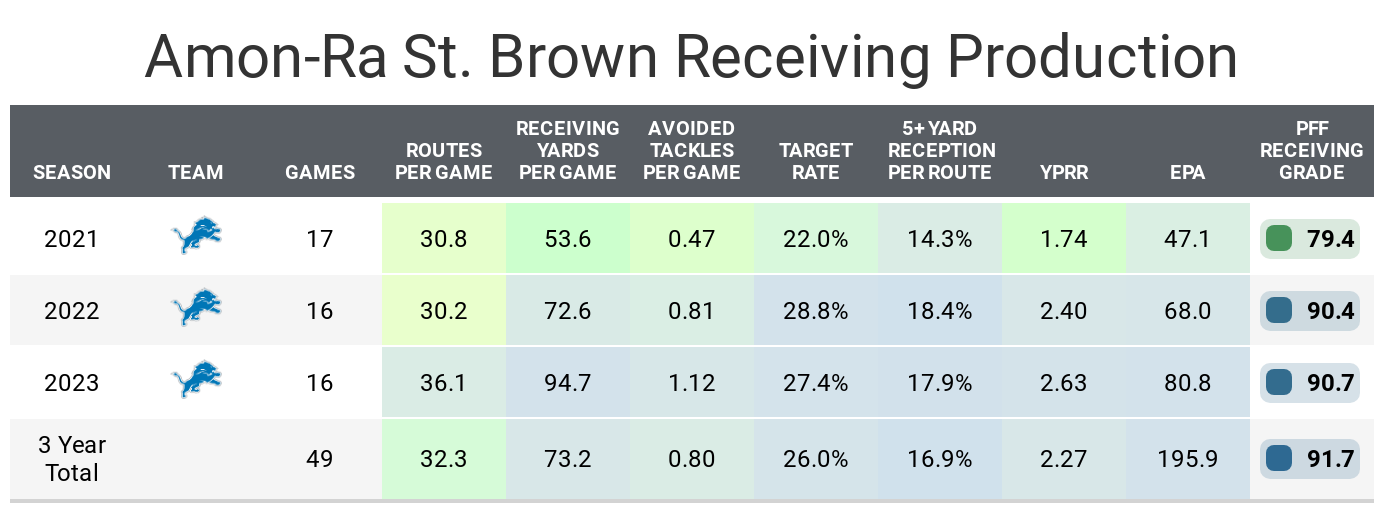
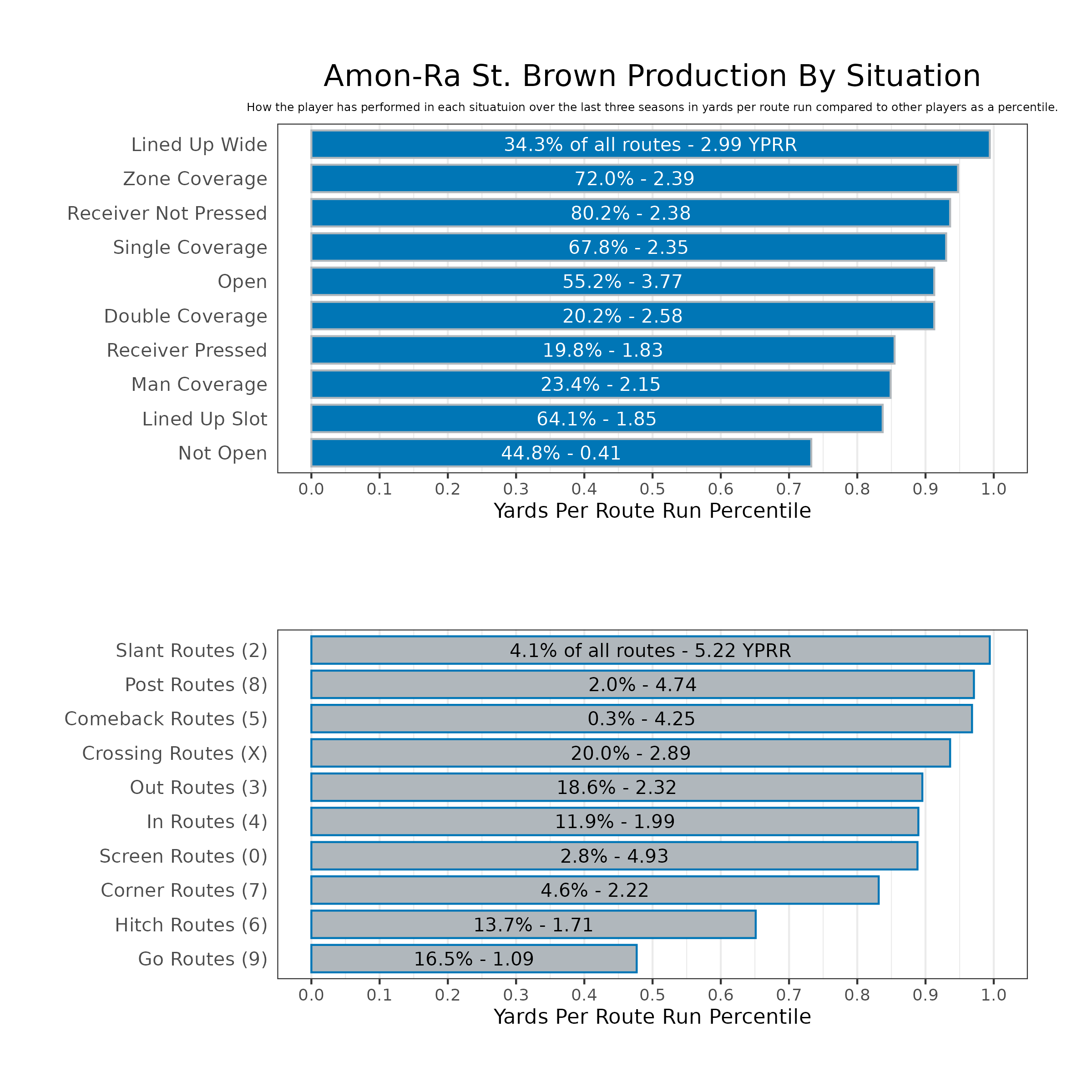
Competition for Touches
St. Brown’s role in the Lions offense hasn’t changed since joining the team. He lines up at the Z position in two-receiver sets and moves to the slot in three-receiver sets. His target share has been elite, partially due to a lack of competition for targets from other wide receivers.
Since joining the Lions, Kalif Raymond has seen the second-most targets among Lions wide receivers, and he’s primarily been a backup.
The Lions' wide receiver room looks similar to last year, except they didn’t re-sign WR2 Josh Reynolds or WR5 Marvin Jones Jr. This means players such as Jameson Williams will need to step up.
St. Brown's biggest competition for targets comes from second-year players Sam LaPorta and Jahmyr Gibbs. It’s at least possible that St. Brown will have a lower target share this year despite the lack of wide receiver competition if LaPorta and Gibbs can take a larger part of the offense. Still, even if he does lose some target share, it shouldn’t be too significant.

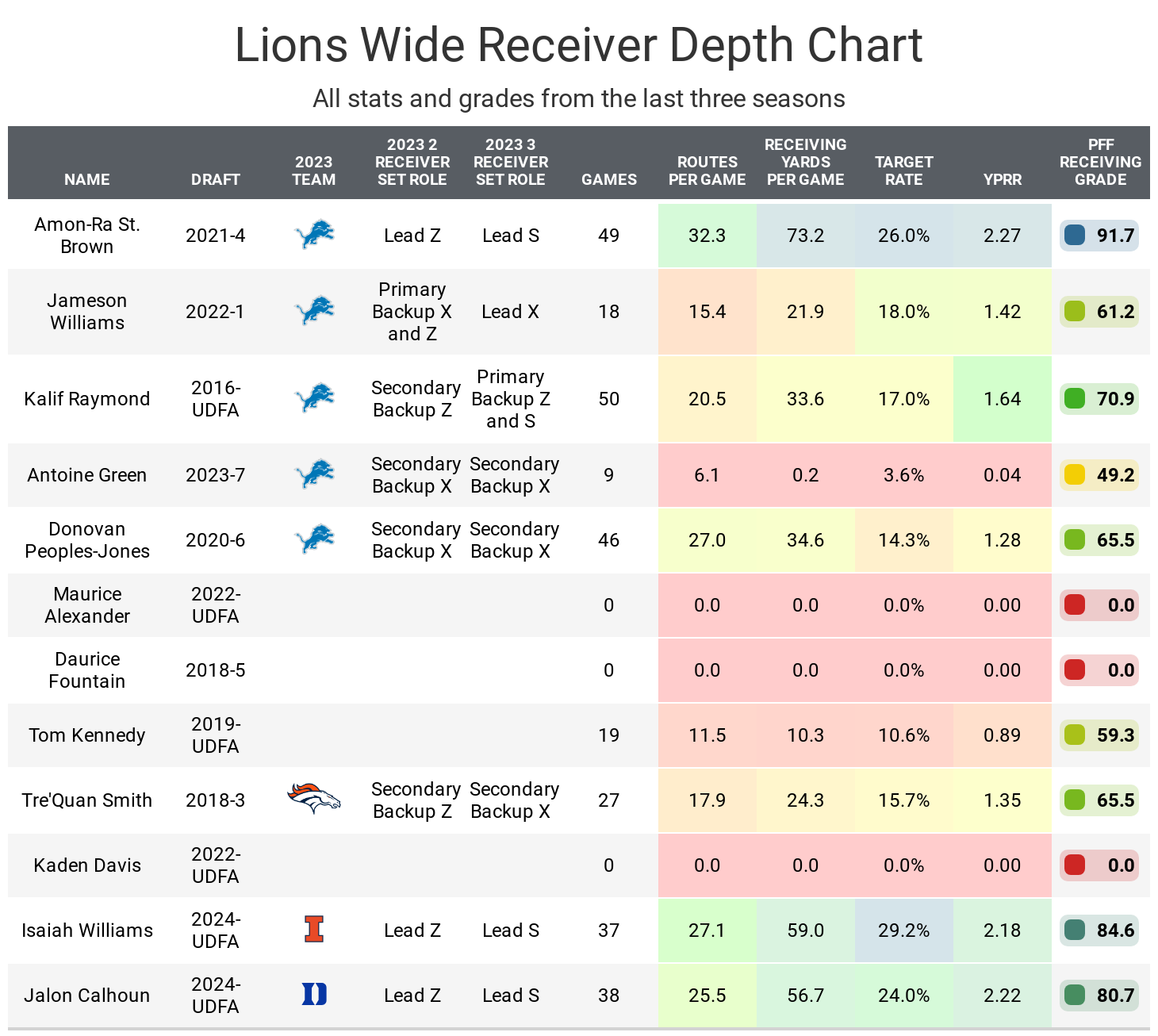
Impact of Teammates
The Lions offense both benefits and hurts St. Brown’s fantasy value. For one, head coach Dan Campbell and offensive coordinator Ben Johnson have no problem running the ball, as they’ve run at an above-average rate in each of the last three seasons.
Jared Goff’s low deep-target rate is one of the biggest limiting factors on St. Brown’s receiving production and why he’s the consensus fifth wide receiver and not higher. The four receivers ahead of St. Brown in ADP average 2.6 yards per route run on go routes and are all within the 85th to 100th percentile in that metric. St. Brown still runs go routes on a significant number of plays, but he doesn’t get targeted as much on those routes.
On the flip side, St. Brown benefits from being on one of the best offenses in the NFL. Goff’s high accuracy on his passes helps St. Brown be in a position to gain yards after the catch, and the more the Lions reach the red zone, the more opportunities St. Brown has to score.
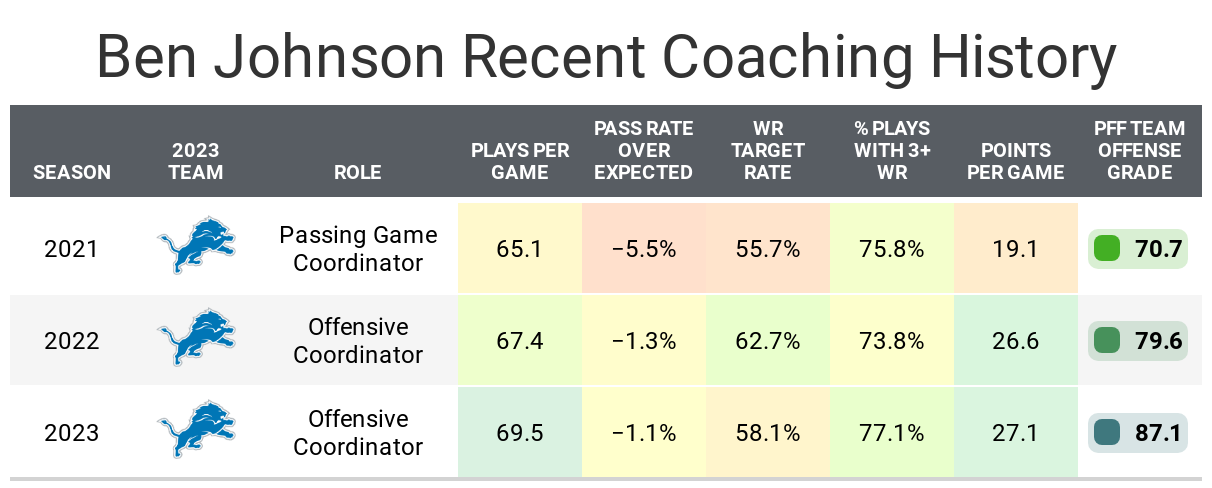

Bottom Line
St. Brown deserves to get picked in the top half of the first round of PPR drafts. The Lions' run-first offense and Jared Goff’s aversion to deep passes might prevent St. Brown from being in the overall WR1 conversation, but an argument can be made that the Lions receiver is the safest pick in fantasy drafts this year.
Footnotes
-
- The statistics for the tables and charts were generally chosen based on their ability to predict future fantasy performance (on either a per-game or per-occasion basis) or on their ability to describe the player relative to others at the same position.
-
- Opportunities for this purpose are defined by passing dropbacks, rushing attempts and routes run as a receiver.
-
- Numbers are either by season or based on the last three years. For rookies, only college numbers are included. Only NFL numbers are included for non-rookies, even if they played in college in the last three years.
-
- Because college competition is relatively easier than NFL competition, most rookies will likely see a decline in their numbers compared to their previous numbers.
-
- The colors for all tables in this article range from blue (good or high) to red (bad or low).
-
- All percentiles or colors compare the given player to other players with a high sample of opportunities. Generally, it’s one-third of the possible opportunities given the sample. If the player in question doesn’t have enough opportunities, they are still compared, even though a player could look good or bad on that small sample size, which might not be as predictive.
-
- Information on running back utilization classifications and importance can be found here, wide receiver here and tight end here.
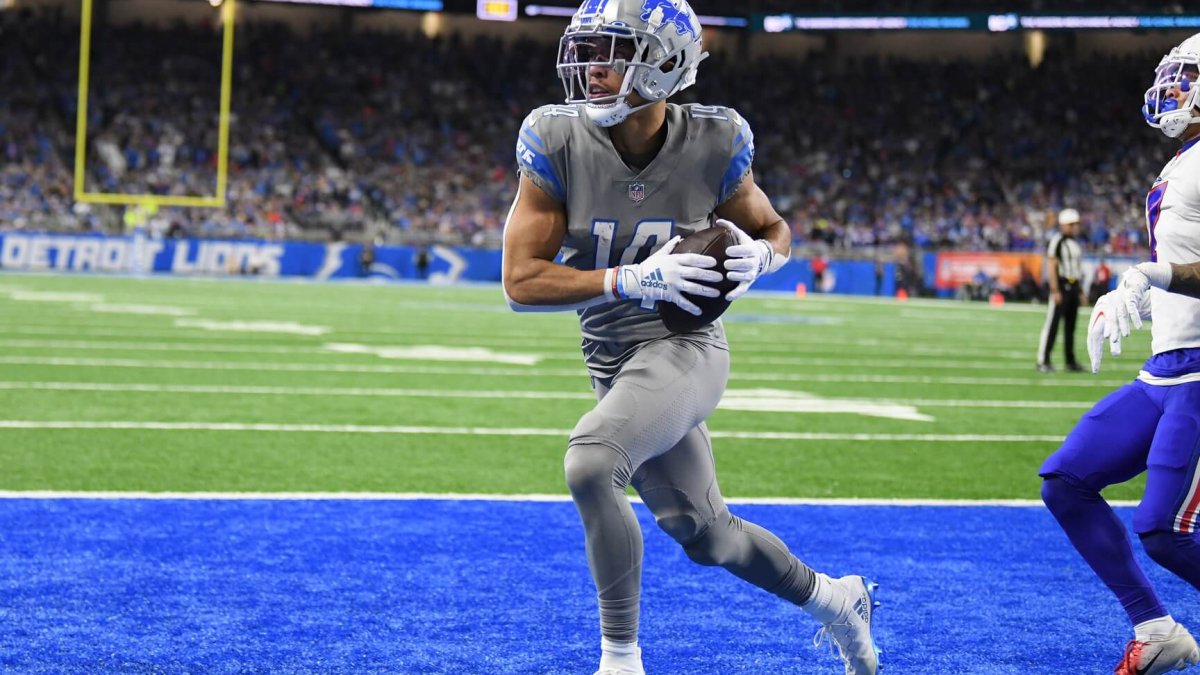



 © 2024 PFF - all rights reserved.
© 2024 PFF - all rights reserved.